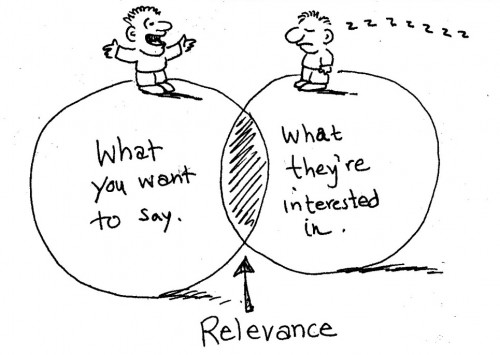How to enter the evergreen mindset for successful content
A lot of what goes onto the internet never leaves. Yes, we have disappearing stories or images on the likes of Snapchat and Instagram, but the kind of quality content you want to be posting on your website should have a sense of permanence to them.
If your business has had an online presence for more than a few years, you’ve likely got articles published on there that stretch just as far back. What separates the great from the good content output of some websites is what we call ‘evergreen content’. These are the topics that never go out of style or date, so even if you published it four years ago, it’s still getting traffic.

This means that the articles your team are putting their soul into actually stay relevant past the few weeks they’re at the top of the latest posts list and you continue to reap the benefits of work completed years ago.
Named after the evergreen tree which is known for retaining its leaves throughout all seasons, tapping into this type of writing will help you squeeze even more value out of your content marketing. Who doesn’t want that!
Three examples of evergreen (and non-evergreen) content
While we are singing the praises of evergreen content, your entire output doesn’t need to be evergreen. There’s a lot of value in articles that rely on being read in the moment; a match that burns half as long probably burns twice as bright. It’s in a balance of evergreen and non-evergreen content where you’ll find you’re satisfying the most visitors to your website.
The easiest way to know if the content currently on your blog – or future ideas you have for it – are evergreen or not is to simply ask yourself if you’d want to read that in three years time.
For example, these are some evergreen ideas that will always be relevant; no matter the year, the season, the day.
- Five ways to cook an egg
- Who was Nelson Mandela?
- How to build your personal brand in five easy steps
Those are articles that don’t need updating to stay relevant and isn’t only going to peak in traffic for one week and then drop off. To help you understand the difference, here are three ideas that are very non-evergreen:
- Lionel Messi suffers injury in latest match, out for 2-3 weeks
- The highlights of today’s schedule for Brighton SEO
- What I made for breakfast this morning

In three years’ time, there’s a good chance no one is going to be interested in the minor injury that the Argentinian forward suffered, or what the stand-out presentation was in an outdated conference.
Why evergreen content is so great
These more topical ideas can always provide decent upticks in traffic within a few days of being published, so we can’t underestimate the value of subjects like these that can strike while the iron is hot on a subject matter. However, these provide little to no passive worth.
With an evergreen blog post, you can continue to rank for keywords that actively get searches and even build backlinks to it without you lifting a finger. That means that an extra hour or two working on an evergreen-spin for your content could save you far more hours in the future. Backlinks to your website and appearing high for searches that bring in traffic can all help to passively generate leads, while also establishing you as a relevant thought leader.
By focusing on evergreen ideas, you’ll also end up focusing on the main questions people may be asking or issues readers may be facing. Good content answers questions the reader has (even if they didn’t know it), so ask yourself where there’s more value of these two:
- Answering the question people have been asking for two days
- Answering the question people have been asking for two years
Both provide value, but it’s the second one where you’ll get the most recurring, passive benefits like traffic and links.
How to enter the evergreen mindset
We’ve collected a few tips below to help you think of evergreen content and how to capitalize on them to deliver something that stays relevant beyond what your competitors may be producing.
Utilize keyword research
There are plenty of free keyword research tools that you can use to see how many searches a particular term is getting, such as Keyword Generator by Ahrefs or the Keywords Everywhere extension. However, to gauge interest over a long period of time (which is essential for this), then we’d recommend Google Trends.
Since it’s from Google, you can trust the data and the easy-to-use interface means that you don’t need to know your way around a search engine to use it. If the result for the term is a largely flat graph with one or two huge spikes over a multi-year period – it probably isn’t very evergreen. We’ve provided an example below, which is the result for “2018 NBA finals” over a five year period. If you were looking for the next greatest evergreen article topic, this isn’t it:

Optimize for the keyword you find
As a very basic keyword optimization lesson, ranking well for the searches you want to appear for all comes down to relevancy. When a search engine like Google crawls your website, you want to make sure it knows you’re relevant to the topic you’re focusing on and the field you operate within. You can do that by including keywords like the one you find using Google Trends in the earlier step, and other ones relevant to that.
To help think of these, picture that main keyword as a circle on a whiteboard. Then, mentally draw lines off from that center circle and think of other terms that people may associate with that one term. So, if you wanted to target a piece on how to clean Air Jordans, you might have “Air Jordan repair” in the middle, then lines off it with phrases like “shoelaces”, “soles” and “show tongues”. By talking about these topics, you’re further ensuring Google that when people search for terms like “Air Jordan repair”, it knows you’re relevant because not only have you included that keyword, but you’ve provided supporting keywords, too.
Make sure you keep the keyword usage organic, though! Google is smart, and ramming five keywords into a nine-word sentence may only set off alarm bells that what you’re writing is trying to trick the search engine – which is a form of what people call “blackhat SEO”. Read everything that you write back to yourself; if it doesn’t sound organic, you’re probably trying too hard!
Find a topic that will always be relevant to you, not just the readers
Even if you find something that people will be searching for in many years’ time, you need to be sure it will still be relevant to you. For example, if you’re a social media startup in the health space and you want to write an article about a certain field you’re going to branch into, then make sure that’s still going to be a focus of yours in a few years time.

If you branch into it for a few months and then give up, you might still be getting traffic for that term in the future, but the value provided is much lower if the visitors are no longer relevant to what you provide.
Avoid referencing topical news
While this likely won’t be a deal-breaker for someone reading it, this can be a really effective tip if you just bear it in mind when you’re writing. A topic can be evergreen, but you can date it very easily by referring to something that, for example, only just happened in the news.
Remember, if you’re doing evergreen content right, people will be reading these pages years in the future; making a reference to something like the latest social media snafu of an influencer will only make it seem outdated further down the line.
Write for the layman
There are few topics that have more experts than beginners. With that in mind, you don’t want to isolate a whole audience by assuming knowledge on the reader’s behalf. So, avoid complicated, technical language that might put off people unfamiliar or new to the topic. After all, experts may know the answer you’re providing anyway, so wouldn’t be searching for an article like yours.
Of course, like everything listed in this section, this may be true for one topic but not another. Understand why it is that you should keep it basic and then use your initiative from there.
Closing note
We hope this has helped you understand the – often untapped – value of being evergreen. By using the tips provided in this piece, you’ll find that writing content that’s relevant many years in the future simply opens you up to the backbone of any great blog: passive value.
Source: ClickZ
